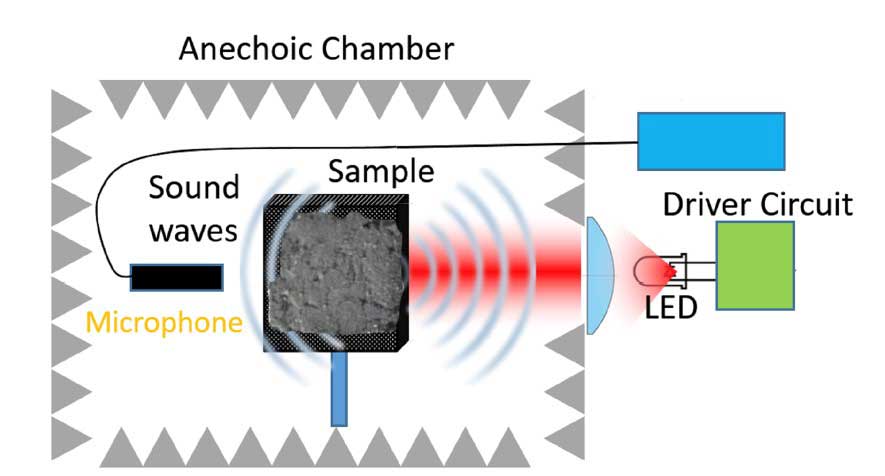
The modulation of light plays a key role in modern data-transfer technologies. National Laboratory of Frascati, in collaboration with “Sapienza” University of Rome, together with Swiss and Chinese colleagues, proved tridimensional graphene structures can transduce light into sound waves through an extremely efficient mechanism. Potential applications of this phenomenon include the realization of a photothermal effect graphene loudspeaker, enabling a fully digital functioning, from acoustic frequencies to the ultrasound range (Figure 1). The results obtained suggest new opportunities in terms of light generation and control of both sound signals and ultrasound which could potentially be used in a wide range of applications related not just to high fidelity loudspeakers, but also to radiation detectors and medical devices.
Graphene was the first thermodynamically stable 2D material to be discovered. It’s an exceptional material for both plasmonic and photonics and it offers a large number of technological applications. Recently, the new manufacturing processes have made it possible to synthesize this material with 3D configurations. It is precisely the nanoporous graphene that shows this extraordinary photoacoustic response, as well as allowing several innovative applications in batteries, integrated polymer devices, catalysis and so on.
LNF expertise and research capacity in the field of advanced materials – among them graphene – allowed LNF to be selected among the ten joint scientific and technological research projects recently signed by the Foreing Ministry and the National Natural Science Foundation of China (NSFC), the most important Chinese funding agency for fundamental science research.
The LNF project “3-Dimensional Graphene: Applications in Catalysis, Photoacoustics and Plasmonics”, coordinated by A. Marcelli, will concern the development of 3D carbon based systems to be used (for applications) in photonics and plasmonic within the THz range in the electromagnetic spectrum, for high efficiency transduction of light into sound, and within both the acoustic range and ultrasound, for micropropulsion and, finally, for more efficient catalytic processes.

This project, highly competitive in the international arena, is a collaboration among INFN National Laboratory of Frascati and Physics Department of “Sapienza” University (coordinated by S. Lupi) and three Chinese institutions internationally recognized with relevant infrastructures dedicated to material characterization: the Beijing Institute of Technology (BIT), the Beijing University of Chemical Technology (BUCT) and the University of Chinese Academy of Sciences, the University of Science and Technology of China (USTC) located in the second research centre of China in Hefei.
Translation by Camilla Paola Maglione, Communications Office INFN-LNF
 INFN-LNF Laboratori Nazionali di Frascati
INFN-LNF Laboratori Nazionali di Frascati